Native Advertising
Definition
Native advertising is a form of paid media that blends in with the surrounding content and appears as a natural part of the user experience.
Description
It is a type of advertising that is designed to blend in with the content and format of the platform where it is displayed, making it appear more like editorial content than traditional advertising.
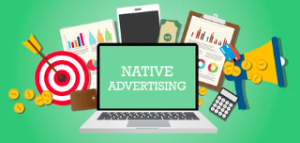
It can take many forms, including sponsored content, promoted posts, in-feed ads, and recommended content. Native ads typically offer relevant and valuable information to the audience and are intended to be less disruptive and more engaging than traditional banner or display ads.
The goal is to provide a seamless and non-intrusive advertising experience for users while still achieving the desired marketing objectives for the advertiser. It has become increasingly popular in recent years due to the rise of ad-blocking software and the need for more effective and less intrusive forms of advertising.
Importance of Native Advertising
It is important for several reasons:
- Improved user experience: Native ads blend in with the surrounding content and format of the platform, making them less disruptive and more engaging for users.
- Higher engagement rates: Since native ads appear part of the user experience, they tend to be more relevant and interesting to users, leading to higher click-through rates and engagement.
- Increased brand awareness: Native ads can help increase brand awareness by reaching a wider audience and positively associating with the content or platform where they are displayed.
- Better targeting: It allows for more precise targeting of specific audiences based on their interests, behaviours, and demographics.
- Greater ROI: It can provide a higher return on investment than traditional advertising due to its effectiveness in engaging users and generating leads or sales.
Steps involved in Native Advertising
The steps involved in creating a native advertising campaign are as follows:
- Define your target audience: Identify the specific audience you want to reach with your advertising campaign based on their interests, demographics, and behaviours.
- Choose the platform and format: Select the platform and format that aligns with your campaign goals and audience preferences. Examples include sponsored content, in-feed ads, and recommended content.
- Create the content: Develop engaging, informative, and relevant content for your target audience. The content should be aligned with your brand messaging and campaign objectives.
- Design the ad: Design the ad to match the look and feel of the platform and blend in with the surrounding content. Use eye-catching visuals and a clear call to action to encourage engagement.
- Test and optimise: Test the ad to ensure it performs well and optimise it based on feedback and performance data. Continuously monitor and refine the campaign to improve results.
- Measure and analyse: Measure the performance of your campaign using metrics such as click-through rates, engagement rates, and conversions. Analyse the data to gain insights and inform future campaigns.
How Native Advertising works?
It works by blending in with the look and feel of the platform where it is displayed, such as a news website or social media platform. The ad is designed to match the content format and style of the platform so that it is a natural part of the user’s experience.
The goal is to provide valuable content relevant to the user’s interests while promoting a brand or product. This type of advertising is less disruptive than traditional ads and is often seen as more trustworthy and engaging.
Native ads can take many forms, including sponsored, in-feed, recommended, and search ads. They are typically labelled as “sponsored” or “promoted” to distinguish them from regular content.
To create a successful native ad campaign, it is important to understand the target audience and the platform where the ad will be displayed. The ad’s content should be informative, relevant, and engaging, and the visuals should be high-quality and attention-grabbing.
It also provides a non-intrusive and more engaging way for brands to reach their target audience while improving the platform’s user experience.
Future Scope of Native Advertising
The future of native advertising looks promising with the following potential developments:
- Increased adoption: As more brands realise the benefits of native advertising, the adoption rate is likely to increase, leading to more opportunities for publishers and advertising platforms.
- AI-powered optimization: Artificial intelligence can help optimise native ad campaigns by analysing user data and behaviour to deliver more relevant and compelling ads.
- Interactive and immersive ads: Interactive and immersive ads, such as augmented and virtual reality, could provide new ways for brands to engage with their audience through native advertising.
- Voice-activated ads: With the rise of voice assistants and smart speakers, voice-activated native ads could become a new way for brands to reach their audience.
- Integration with eCommerce: Native ads could become more integrated with eCommerce platforms, allowing users to purchase products directly from the ad without leaving the platform.
Example
A well-known example of native advertising is the “15 Beautiful Places to Visit in Europe” sponsored post by Airbnb on the travel website Buzzfeed. The post included stunning photos of European destinations, travel tips and recommendations for accommodations.
The post was clearly labelled sponsored content and blended seamlessly with Buzzfeed’s regular content. This campaign helped Airbnb reach a wider audience and promote its brand as a provider of unique travel experiences.
FAQ
What is native advertising?
Native advertising is a form of online advertising that matches the look and feel of the content on the platform where it is displayed.
How it is different from traditional advertising?
Traditional advertising is often more intrusive and interrupts the user experience, whereas native advertising blends in with the surrounding content and format of the platform.
What are some standard formats of native advertising?
Typical forms of native advertising include sponsored in-feed, recommended, and search ads.
Why is native advertising important?
It is important because it provides a more engaging and less disruptive way for brands to reach their target audience while improving the user experience.
What are some best practices for creating native ads?
Best practices for creating native ads include creating relevant and informative content, using high-quality visuals, and ensuring that the ad matches the format and tone of the platform.
How do you measure the effectiveness of native advertising?
The significance of it can be measured by tracking metrics such as engagement rates, click-through rates, and conversions.
What are some potential challenges of native advertising?
Possible challenges of native advertising include issues with disclosure and transparency, concerns about user privacy, and the need for ongoing optimisation and testing to ensure effectiveness.
Open Graph
Definition
Open Graph is a technology that enables websites to define and present their content in a structured way when shared on social media platforms.
Description
Facebook introduced Open Graph to give website owners a standardised way to control how their content is presented when shared on the platform. It allows for a more decadent, visually appealing preview of shared content, which can help drive engagement and click-through rates. Other social media platforms now widely support it, making it a valuable tool for online marketers.
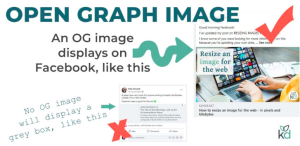
It is a protocol developed by Facebook that allows website owners to specify how their content should be displayed when shared on social media platforms. It provides a set of meta tags that can be added to the website’s HTML code, which describe the title, description, image, and other information about the content. When a user shares a link to the website on social media, the platform will use this information to create a rich, visually appealing preview of the content. This can increase engagement and click-through rates for shared links. Open Graph is widely supported by major social media platforms, including Facebook, Twitter, LinkedIn, and Pinterest.
Importance of Open Graph
Following is the importance of it:
- It provides website owners a standardised way to control how their content is displayed on social media platforms.
- By using it’s meta tags, website owners can ensure that their content appears visually appealing and informative, which can increase engagement and click-through rates.
- It is widely supported by major social media platforms, including Facebook, Twitter, LinkedIn, and Pinterest, making it a valuable tool for online marketers who want to optimise their content for social media sharing.
- It helps establish a consistent and recognizable brand identity across social media platforms by ensuring that shared content has a consistent look and feel.
- It can also provide additional context and information about shared content, such as the author, publisher, and publication date, which can help establish credibility and authority.
- By using it, website owners can improve the overall visibility and reach of their content on social media, which can lead to increased traffic and, ultimately, conversions.
How to use Open Graph for websites?
To use Open Graph for your website, you must add the appropriate meta tags to the HTML code of your website’s pages. Here are the steps to do so:
- Determine which Open Graph meta tags you must include for each website page. The basic tags include title, description, and image, but you may want additional tags such as author, publisher, and publication date.
- Add it’s meta tags to the head section of your website’s HTML code. You can do this manually by editing the HTML code directly or using a plugin or extension if you use a content management system (CMS) such as WordPress.
- Test your implementation using Facebook’s Open Graph Object Debugger tool. This will ensure the correct information is pulled in and displayed when your content is shared on social media platforms.
- Monitor your social media sharing analytics to track the performance of your shared content. Use this data to refine your implementation and improve the effectiveness of your social media marketing efforts.
Future Scope of Open Graph
The future scope of Open Graph is bright as it continues to evolve and expand to meet the changing needs of the digital marketing landscape. Here are some potential developments and opportunities for it in the future:
- Enhanced support for video content: It may expand to include more comprehensive meta tags for video content, allowing website owners to control how their videos are displayed and shared on social media platforms.
- Integration with emerging technologies: It may be integrated with emerging technologies such as virtual reality, augmented reality, and voice search, enabling website owners to provide a rich, immersive experience for users across various platforms.
- Greater emphasis on privacy and security: It may evolve to address concerns around user privacy and data security, providing more granular control over how user data is shared and used on social media platforms.
- Improved analytics and tracking: It may offer more robust analytics and tracking capabilities, enabling website owners to measure the impact of their social media marketing efforts more accurately and make data-driven decisions.
Example
Nike is a global sportswear brand that uses it to optimise its website’s content for social media sharing. When you share a Nike product on social media, the shared content includes an eye-catching image, a concise and engaging description, and a link to the product page on Nike’s website.
For example, if you share a Nike Air Zoom Pegasus 38 running shoe on Facebook, the shared content will include an image of the shoe, along with the shoe’s name, description, and a link to the product page on Nike’s website. This makes it easy for other users to engage with the content, click through to Nike’s website, and make a purchase.
Using it to optimise their shared content, Nike can increase engagement and click-through rates on social media and drive more traffic and sales to their website.
FAQ
What is an Open Graph?
Open Graph is a set of meta tags that website owners can add to their HTML code to optimise their website’s content for social media sharing.
Why is Open Graph important?
It is important because it allows website owners to control how their content is displayed and shared on social media platforms, which can increase engagement and click-through rates.
What are some of the most important Open Graph meta tags?
Some of the most important Open Graph meta tags include title, description, and image, which provide basic information about the content being shared. Other important meta tags may include author, publisher, and publication date.
How do I implement Open Graph on my website?
To implement it on your website, you must add the appropriate meta tags to the head section of your HTML code. You can do this manually or using a plugin or extension using a content management system (CMS) like WordPress.
How can I test my Open Graph implementation?
You can test your implementation using Facebook’s Open Graph Object Debugger tool, which will show you how your content will appear when it is shared on social media platforms.
How can I use Open Graph to improve my social media marketing?
Using Open Graph to optimise your website’s content for social media sharing, you can increase engagement and click-through rates on social media platforms, ultimately driving more traffic and sales to your website.
Open Rate
Definition
Open rate refers to the percentage of recipients who opened an email message out of the total number of emails delivered.
Description
Open rate is a metric used to measure the effectiveness of email marketing campaigns. It is calculated as the percentage of email recipients who opened an email message out of the total number of emails delivered. For example, if an email campaign was sent to 1000 subscribers and 200 of them opened the email, the open rate would be 20%.
![]()
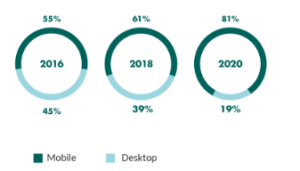
Source: SuperOffice CRM
Open rate is an essential metric for email marketers because it provides insights into how well their email campaigns perform. A higher available rate indicates that the email content was relevant and engaging to the target audience, while a low open rate indicates that the email subject line or content did not resonate with the subscribers.
However, the open rate should not be used as the only measure of email campaign success. It does not necessarily indicate whether the email content led to a desired action, such as a click-through to a website or a conversion. Therefore, email marketers should also track metrics such as click-through rate, conversion rate, and revenue generated from email campaigns.
Factors affecting open email rates include the subject line, sender name, email content, and the time and day of the week the email is sent. Testing and optimization of these factors can improve open email rates over time.
Importance of Open Rate
Open rate is important:
- Email marketers need to know their open rate because it provides insights into the effectiveness of their email campaigns. By tracking open rates over time, marketers can determine whether their email content and subject lines resonate with their target audience.
- A high open rate indicates that the email content is relevant and engaging to subscribers, while a low open rate may mean that the content needs improvement.
- Knowing the open rate can also help marketers identify opportunities for optimization and testing. For example, they can test different subject lines or sender names to see which ones result in higher open rates. They can also experiment with the timing of their email campaigns to determine when subscribers are most likely to open their emails.
- Tracking open rates can help marketers better understand their subscribers and preferences. By analysing open rates by segment or demographic, marketers can gain insights into what types of content most appeal to different groups of subscribers. This can help them tailor their email campaigns to better meet the needs and interests of their target audience.
- Knowing the open rate is an important aspect of email marketing that can help marketers improve their campaigns, build stronger relationships with their subscribers, and achieve their business goals.
How to optimise open rates?
There are several strategies that email marketers can use to optimise their open rates:
- Write compelling subject lines: The subject line is the first thing subscribers see when they receive an email, so it is important to make it compelling and relevant to the content of the email. Marketers can use personalization, curiosity, and urgency to encourage subscribers to open their emails.
- Segment your audience: Sending targeted emails to specific audience segments can help improve open rates. By sending relevant content to subscribers based on their interests or behaviours, marketers can increase their chances of opening and engaging with the email.
- Use a recognizable sender name: Using a recognizable sender name can help build trust and credibility with subscribers. Marketers can use their company name or the name of a relevant team member to make the email feel more personal and trustworthy.
- Optimize the email preview text: The preview text is the short snippet of text that appears below the subject line in the email inbox. Marketers can use this space to provide additional context and entice subscribers to open the email.
- Test and optimize: Marketers should continuously test and optimize their email campaigns to improve open rates. A/B testing different subject lines, sender names, and email content can help determine which elements most encourage subscribers to open and engage with the email.
- Maintain a clean email list: Regularly cleaning your email list by removing inactive or unengaged subscribers can help improve open rates. A smaller, more active list is more likely to result in higher open rates and better campaign performance.
Future Strategy for Open Rate
Best strategies to improve email open rates is to:
- Leverage artificial intelligence (AI) and machine learning (ML) technologies to better understand subscriber preferences and behaviour. By analysing data such as email engagement history, browsing behaviour, and social media activity, AI algorithms can predict which types of content and messaging are most likely to resonate with each subscriber.
- Another strategy is incorporating more interactive elements into email content, such as animated GIFs, videos, and gamification. These interactive elements can increase engagement and encourage subscribers to open and interact with the email.
- Personalization and customization will continue to be essential strategies for improving open rates in the future. Marketers can use data such as location, interests, and past purchase behaviour to tailor email content to each subscriber, making the email more relevant and engaging.
- Incorporating emerging technologies such as voice assistants and augmented reality (AR) into email campaigns may become more common. For example, subscribers may be able to interact with email content using voice commands or see products in 3D through AR overlays. These innovative features can help make emails more engaging and memorable, leading to higher open rates and better campaign performance.
Example
A clothing brand sends an email campaign promoting its new summer collection. The email’s subject line reads “Get Ready for Summer with Our New Collection” and includes personalised product recommendations based on the recipient’s browsing history on the brand’s website.
After sending the email campaign to its subscriber list, the brand tracks the open rate to determine its effectiveness. They find that the open rate for the campaign is 25%, which means that 25% of the recipients opened the email.
Based on this data, the brand can analyse what worked well and what can be improved in future email campaigns. For example, they may determine that the personalised product recommendations effectively increase open rates and decide to include more customised content in future email campaigns.
By consistently tracking open rates and using the data to optimise their email campaigns, the clothing brand can improve engagement with their subscribers and drive more sales.
FAQ
What is the open rate?
Open rate is the percentage of recipients who opened an email sent by a marketer.
Why is an open rate significant?
Open rate is important because it provides insight into the effectiveness of an email campaign. A higher open rate indicates that the subject line, sender name, and preview text effectively encouraged recipients to open the email.
How is the open rate calculated?
Open rate is calculated by dividing the number of emails opened by the total number of emails sent, then multiplying by 100 to get a percentage.
What is a good open rate?
A good open rate varies depending on the industry, audience, and type of email being sent. However, on average, an excellent open rate is around 20-25%.
How can I improve my open rate?
Strategies for improving open rates include writing compelling subject lines, segmenting your audience, using a recognizable sender name, optimising the email preview text, testing and optimising, and maintaining a clean email list.
What are some future strategies for improving the open rate?
Future strategies for improving open rates include leveraging artificial intelligence and machine learning, incorporating more interactive elements into email content, personalization and customization, and incorporating emerging technologies such as voice assistants and augmented reality.
Omnichannel Marketing
Definition
Omnichannel marketing is a marketing strategy that creates a seamless and integrated customer experience across all channels and touchpoints, both online and offline.
Description
It helps by providing a seamless and consistent customer experience across all touchpoints, which enhances customer satisfaction, loyalty, and engagement.
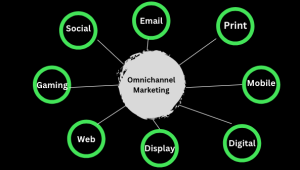
In addition, by creating a unified brand experience, it can increase customer lifetime value, drive sales, and improve brand reputation. It involves delivering consistent and personalised messaging and offers to customers through multiple channels, such as social media, email, SMS, mobile apps, in-store, and online, to provide a cohesive and convenient customer experience, regardless of how they engage with the brand.
It aims to enhance the customer experience, build customer loyalty, and drive sales.
Importance of Omnichannel Marketing
Omnichannel marketing is a marketing strategy that provides customers with a seamless and integrated experience across multiple channels, including online, mobile, social media, email, and in-store. Here are some reasons why it is important:
- Increased Customer Engagement: It helps businesses engage with customers more effectively by providing them with a consistent message and experience across multiple channels. This can lead to increased customer engagement, loyalty, and, ultimately, sales.
- Improved Customer Experience: With omnichannel marketing, customers can choose the channel that suits their preferences and needs best, and businesses can deliver a personalised experience. This can result in an improved customer experience, which can lead to customer satisfaction and retention.
- Increased Sales: It allows businesses to reach customers through multiple channels, which can lead to increased sales. By providing customers with a seamless experience across all channels, businesses can encourage customers to make purchases.
- Better Data Collection: It allows businesses to collect more data about their customers across multiple channels. This data can be used to better understand customer behaviour and preferences, which can inform future marketing efforts.
- Competitive Advantage: With this marketing, businesses can differentiate themselves from their competitors by providing a better customer experience. This can increase brand loyalty and a competitive advantage in the marketplace.
How to create an omnichannel marketing strategy?
Omnichannel marketing is a marketing strategy that provides customers with a seamless and integrated experience across multiple channels, including online, mobile, social media, email, and in-store. Here are some reasons why it is essential:
- Increased Customer Engagement: It helps businesses engage with customers more effectively by providing them with a consistent message and experience across multiple channels. This can lead to increased customer engagement, loyalty, and sales.
- Improved Customer Experience: With omnichannel marketing, customers can choose the channel that suits their preferences and needs best, and businesses can deliver a personalised experience. This can improve customer experience, leading to customer satisfaction and retention.
- Increased Sales: It allows businesses to reach customers through multiple channels, which can lead to increased sales. By providing customers with a seamless experience across all channels, businesses can encourage customers to make purchases.
- Better Data Collection: It allows businesses to collect more data about their customers across multiple channels. This data can be used to better understand customer behaviour and preferences, which can inform future marketing efforts.
- Competitive Advantage: With this, businesses can differentiate themselves from their competitors by providing a better customer experience. This can increase brand loyalty and a competitive advantage in the marketplace.
Future of Omnichannel Marketing?
The future of omnichannel marketing constantly evolves as new technologies emerge and customer behaviour changes. Here are some potential trends and developments that may shape the future:
- Mobile-first Approach: As mobile devices become increasingly ubiquitous, businesses must adopt a mobile-first approach to omnichannel marketing. This means ensuring all channels, including websites and social media, are optimised for mobile devices.
- Voice-Activated Assistants: With the rise of voice-activated assistants such as Amazon Alexa and Google Home, businesses must consider integrating these devices into their marketing strategies. This may include developing voice-activated apps or integrating with existing platforms.
- Hyper-Personalization: As customer data becomes more readily available, businesses can provide hyper-personalised experiences across all channels. This may include using AI and machine learning algorithms to analyse customer behaviour and preferences and tailoring marketing messages and offers accordingly.
- Augmented Reality: Augmented reality (AR) is expected to play an increasingly important role in this, allowing businesses to create immersive customer experiences. For example, customers can virtually try on clothes or view products in 3D before purchasing.
- Social Commerce: Social media platforms are already an important channel for businesses to reach customers; this trend is expected to continue. In the future, we may see even more integration between social media and e-commerce, allowing customers to purchase directly from social media platforms.
Benefits of Omnichannel Marketing
Omnichannel marketing offers a range of benefits to businesses that can help improve customer experience and drive growth. Here are some of the critical benefits:
- Improved Customer Experience: Omnichannel marketing provides a seamless and consistent experience for customers across all channels, allowing them to engage with the brand in the way that suits them best. This improves customer satisfaction and loyalty.
- Increased Sales: Businesses can improve sales and revenue by providing a more personalised experience for customers. Omnichannel customers have been shown to have a higher lifetime value than single-channel customers.
- Better Data and Insights: It allows businesses to collect and analyse data from multiple channels, providing a more complete view of customer behaviour and preferences. This can help businesses make more informed decisions and improve their marketing strategies.
- Increased Efficiency: By streamlining marketing efforts across all channels, businesses can improve efficiency and reduce costs. This can help improve profitability and free up resources for other business areas.
- profitability and free up resources for other business areas.
Competitive Advantage: Businesses adopting this approach can gain a competitive advantage over those not. By providing a superior customer experience, businesses can differentiate themselves from their competitors and attract new customers.
Example

Myntra is one of India’s most significant online fashion and lifestyle retailers that has successfully implemented an omnichannel marketing strategy to provide a seamless and consistent customer experience across all channels. Here’s how Myntra’s marketing works:
- Online Shopping: Myntra’s e-commerce platform allows customers to browse and purchase products online. The platform is optimised for mobile devices, making it easy for customers to shop on the go. Customers can choose from various products, including clothing, footwear, accessories, and more.
- In-Store Pick-Up: Myntra lets customers pick up online orders from physical stores. This allows customers to avoid shipping costs and receive their orders faster. Myntra also uses these physical stores as fulfilment centres, which allows the company to reduce delivery times and improve customer satisfaction.
- Mobile App: Myntra has a mobile app that allows customers to browse products, make purchases, and track their orders. The app also features personalised recommendations based on a customer’s browsing and purchase history. Customers can also use the app to scan barcodes in-store and view product information and reviews.
- Social Media: Myntra uses social media channels like Facebook, Instagram, and Twitter to engage customers and provide personalised recommendations. The company uses social media to showcase its products, share fashion tips, and offer exclusive discounts and promotions.
Marketing Calendar
Definition
A marketing calendar is a schedule of planned marketing activities, such as campaigns, promotions, and events, organised by date and time.
Description
A marketing calendar is tool marketing teams use to plan and organise their marketing activities over a specified period, such as a month, quarter, or year. It includes a schedule of planned campaigns, promotions, events, and other marketing activities, organised by date and time.

A marketing calendar helps to ensure that marketing activities are strategically planned, executed, and measured and can also help to coordinate efforts across multiple teams and channels. By using a marketing calendar, marketing teams can optimise their efforts and ensure they are aligned with business goals and objectives.
Importance of Marketing Calendar
A marketing calendar is an essential tool for any marketing team because it helps to ensure that marketing efforts are well-planned, executed, and measured. Here are some key reasons why a marketing calendar is essential:
- Strategic planning: A marketing calendar allows marketing teams to plan their activities in advance and align them with overall business goals and objectives. This helps ensure that marketing efforts focus on the right target audience and support the company’s overall mission and vision.
- Coordination: A marketing calendar helps to coordinate marketing efforts across multiple teams and channels. By scheduling marketing activities in advance, teams can ensure that they are not overlapping or competing with each other and can work together more effectively.
- Resource allocation: A marketing calendar helps to allocate resources, such as budget and personnel, more effectively. By knowing in advance what marketing activities are planned, teams can allocate resources accordingly and avoid overspending or understaffing.
- Measurement: A marketing calendar allows teams to measure the effectiveness of their marketing efforts by tracking and analysing the performance of each activity. This helps to identify what is working well and what needs to be improved and can inform future marketing decisions.
How to make a marketing calendar?
Here are some steps for making a marketing calendar:
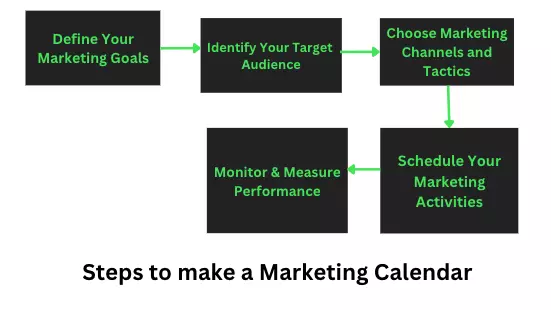
- Define your marketing goals and objectives: Before creating a marketing calendar, it’s important to clearly understand your goals and objectives. These should align with your overall business goals and be specific, measurable, achievable, relevant, and time-bound.
- Identify your target audience: Determine who your target audience is and what channels they use to consume content and engage with brands. This will help you choose the best marketing channels and tactics to reach and engage with them.
- Choose your marketing channels and tactics: Based on your target audience and marketing goals, choose the marketing channels and tactics that are most effective for reaching and engaging with your audience. This could include social media, email marketing, content marketing, advertising, and events.
- Schedule your marketing activities: Using a calendar tool such as Google Calendar or Trello, schedule your marketing activities over a specified period, such as a month, quarter, or year. Include important dates, such as holidays and industry events, and assign responsibilities for each activity.
- Monitor and measure your performance: Regularly monitor and measure the performance of your marketing activities using metrics such as website traffic, engagement rates, conversion rates, and sales. Use this data to adjust your marketing calendar and optimise your marketing efforts.
Future Strategies for Marketing Calendar
Here are some future strategies for making a marketing calendar:
- Use AI and machine learning: As AI and machine learning technologies become more advanced, they can be used to analyse data and predict consumer behaviour more accurately. By incorporating these technologies into your marketing calendar, you can optimise your marketing efforts and personalise your marketing messages to each customer.
- Focus on customer experience: In the future, marketing calendars will increasingly focus on creating personalised and seamless customer experiences across multiple touchpoints. This will require a deeper understanding of the customer journey and a more integrated marketing, sales, and customer service approach.
- Incorporate social responsibility: Consumers are increasingly interested in supporting brands that have a social conscience and are committed to positively impacting society. In the future, marketing calendars must incorporate social responsibility into their messaging and activities and showcase how the brand is making a difference.
- Embrace emerging technologies: As new technologies emerge, such as virtual and augmented reality, voice assistants, and intelligent devices, marketing calendars must adapt and incorporate them into their strategies. This will require a more creative and innovative marketing approach and a willingness to experiment with new technologies.
Example
Nike, a popular sports apparel and footwear brand, illustrates how a marketing calendar can be used.
Nike’s marketing calendar could include the following:
- January: Launch of new running shoe line, social media campaign featuring famous athletes promoting the new line.
- February: Valentine’s Day campaign featuring limited edition sneakers and athletic wear.
- March: Launch of a new line of workout gear, International Women’s Day campaign featuring female athletes and influencers.
- April: Earth Day campaign featuring sustainable and eco-friendly products.
- May: Launch of the summer collection, Memorial Day promotion offering discounts on summer apparel and shoes.
- June: World Cup soccer campaign featuring national team jerseys and soccer shoes.
- July: Fourth of July promotion offering discounts on patriotic-themed apparel and shoes.
- August: Back-to-school campaign featuring new styles and colours for school uniforms and sports gear.
- September: Launch of the fall collection, Labor Day promotion offering discounts on fall apparel and shoes.
- October: Breast Cancer Awareness Month campaign featuring pink ribbon merchandise and donations to breast cancer research.
- November: Black Friday and Cyber Monday promotions offering discounts on all products.
- December: Holiday campaign featuring gift guides and discounts on holiday-themed products.
FAQ
What is a marketing calendar?
A marketing calendar is a tool businesses use to plan and schedule marketing activities throughout the year. It helps businesses to coordinate and track various marketing activities, such as product launches, promotions, events, and content creation.
Why is a marketing calendar important?
A marketing calendar helps businesses to stay organised, plan ahead, and ensure that their marketing efforts are aligned with their overall business goals. It also allows businesses to coordinate their marketing efforts across different channels and touchpoints and measure their marketing activities’ effectiveness.
What should be included in a marketing calendar?
A marketing calendar should include important dates and events, such as holidays, industry events, product launches, and promotions. It should also include details about the specific marketing activities planned for each date, such as social media posts, email campaigns, content creation, and advertising.
How do you create a marketing calendar?
Identify important dates and events relevant to your business to create a marketing calendar. Then, determine the specific marketing activities you want to plan and schedule for each date. Use a spreadsheet or calendar tool to visually represent your marketing plan for the year.
How often should a marketing calendar be updated?
A marketing calendar should be updated regularly, at least once a month, to reflect any changes in the business environment or marketing strategy. It should also be reviewed and adjusted to ensure marketing efforts are well-coordinated and aligned with business goals.
How can I measure the effectiveness of my marketing calendar?
To measure the effectiveness of your marketing calendar, track key performance indicators (KPIs) such as website traffic, social media engagement, email open and click-through rates, and sales. Compare these metrics to your marketing goals and objectives to determine the success of your marketing activities.
Marketing Automation
Definition
Marketing automation is using software to automate repetitive marketing tasks and workflows.
Description
This technology allows businesses to streamline their marketing efforts, reduce manual work, and improve the efficiency and effectiveness of their marketing campaigns.

Its software typically includes tools for email marketing, social media marketing, lead generation, customer segmentation, and analytics. These tools are designed to help businesses create targeted and personalised campaigns that engage and convert leads into customers.
A business may use this software to send personalised emails to subscribers based on their behaviour and interests, such as abandoned cart reminders or product recommendations. The software can also track customer interactions with the business across multiple channels, such as website visits and social media engagement, to better understand their preferences and behaviours.
Marketing automation software can also integrate with customer relationship management (CRM) systems, enabling businesses to manage customer data, track customer interactions, and analyse customer behaviour to inform future marketing efforts.
Importance of Marketing Automation
It is becoming increasingly crucial for businesses of all sizes due to the following reasons:
- Increased Efficiency: It helps businesses automate repetitive tasks and workflows, such as lead nurturing and email marketing campaigns, freeing up valuable time for marketers to focus on other essential tasks.
- Improved Lead Generation: With this, businesses can create targeted and personalised campaigns that engage leaders and move them through the sales funnel more effectively.
- Enhanced Customer Experience: This allows businesses to deliver personalised and relevant content to customers, improving their experience and increasing loyalty and retention.
- Better Analytics: This software provides businesses with detailed analytics and reporting, allowing them to track the effectiveness of their campaigns and make data-driven decisions to optimise their marketing efforts.
- Scalability: It allows businesses to scale their marketing efforts as they grow without additional resources or staff.
How to begin with marketing automation?
If you’re interested in getting started with marketing automation, here are some steps you can follow:
- Define Your Goals: Identify and determine how it can help you achieve them. This will help you choose the right automation tools and create a targeted strategy.
- Choose a Right Tool: Research and select a tool that fits your needs and budget. Some popular options include HubSpot, Marketo, and Pardot.
- Set Up Your CRM: Set up a customer relationship management (CRM) system to track customer interactions and data. This will help you create targeted, personalised campaigns that resonate with your customers.
- Develop a Lead Nurturing Strategy: Create a lead nurturing strategy that aligns with your marketing goals and incorporates automation tools to streamline the process.
- Create Targeted Campaigns: Use automation tools to create targeted and personalised campaigns that engage and convert leads into customers. This can include email marketing campaigns, social media campaigns, and targeted advertising.
- Analyse Results: Use analytics and reporting to track the effectiveness of your campaigns and make data-driven decisions to optimise your marketing efforts.
Best Marketing Automation Tools
Various tools are available on the market, each with strengths and features. Some popular options include:
HubSpot
HubSpot offers a comprehensive suite of automation tools, including email marketing, social media management, lead scoring, and more.
HubSpot is a popular tool that offers a range of features designed to help businesses streamline their marketing efforts and improve their overall growth.

Some key features of HubSpot include:
- Marketing Automation: HubSpot’s tools allow businesses to automate email marketing, lead nurturing, and other marketing campaigns.
- CRM: HubSpot’s customer relationship management (CRM) system helps businesses track and manage customer interactions and data.
- Sales Tools: HubSpot offers sales tools, including lead scoring, prospecting, and pipeline management, to help businesses improve their sales efforts.
- Content Management: HubSpot’s content management system (CMS) allows businesses to create and manage their website and blog content in one place.
- Analytics and Reporting: HubSpot’s analytics and reporting tools allow businesses to track the effectiveness of their marketing efforts and make data-driven decisions to optimise their campaigns.
- Social Media Management: HubSpot’s tools allow businesses to schedule and publish social media posts, monitor social media activity, and analyse social media performance.
- Integrations: HubSpot integrates with various third-party tools, including Salesforce, Zapier, and WordPress, to provide businesses with a comprehensive marketing automation solution.
Marketo
Marketo is a robust automation platform that offers advanced features like artificial intelligence and predictive analytics to help businesses improve their marketing efforts.
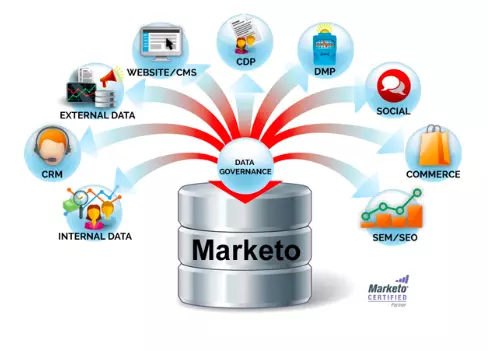
- Marketing Automation: Marketo’s automation tools allow businesses to automate email marketing, lead nurturing, and other marketing campaigns.
- Lead Management: Marketo’s tools help businesses track and manage leads throughout the customer journey.
- Account-Based Marketing (ABM): Marketo’s ABM tools allow businesses to create personalised marketing campaigns for targeted accounts.
- Analytics and Reporting: Marketo’s analytics and reporting tools give businesses insights into their marketing performance and ROI.
- Sales Tools: Marketo offers a range of sales tools, including lead scoring, sales insights, and account profiling, to help businesses improve their sales efforts.
- Web Personalization: Marketo’s tools allow businesses to create personalised experiences for website visitors based on their behaviour and preferences.
- Integrations: Marketo integrates with various third-party tools, including Salesforce, Google Analytics, and LinkedIn, to provide businesses with a comprehensive marketing automation solution.
Pardot
Pardot is a automation tool designed specifically for B2B businesses, offering features like lead scoring, account-based marketing, and Salesforce integration.

Some key features of Pardot include:
- Email Marketing: Pardot’s tools allow businesses to create and send personalised email campaigns to their leads and customers.
- Lead Management: Pardot’s tools help businesses track and manage leads throughout the customer journey.
- Lead Scoring: Pardot’s lead scoring tools allow businesses to prioritise leads based on their level of engagement and interest.
- Forms and Landing Pages: Pardot’s forms and landing page tools allow businesses to create custom forms and landing pages to capture leads and track conversions.
- Analytics and Reporting: Pardot’s analytics and reporting tools give businesses insights into their marketing performance and ROI.
- Salesforce Integration: Pardot is owned by Salesforce and is fully integrated with Salesforce’s CRM platform, allowing businesses to seamlessly manage their leads and customer data.
- Social Media Marketing: Pardot’s social media marketing tools allow businesses to create and schedule social media posts, track engagement, and measure ROI.
ActiveCampaign
ActiveCampaign offers a wide range of automation features, including email marketing, CRM, and lead scoring, as well as advanced segmentation and automation workflows.

ActiveCampaign is a tool designed to help businesses automate their marketing and sales processes. Some key features of ActiveCampaign include:
- Email Marketing: ActiveCampaign’s email marketing tools allow businesses to create and send personalised email campaigns to their leads and customers.
- Marketing Automation: ActiveCampaign’s marketing automation tools help businesses create automated workflows and campaigns to engage leads and customers throughout the customer journey.
- CRM Integration: ActiveCampaign is fully integrated with various CRM platforms, allowing businesses to seamlessly manage their leads and customer data.
- Lead Scoring: ActiveCampaign’s lead scoring tools allow businesses to prioritise leads based on their level of engagement and interest.
- Site Tracking: ActiveCampaign’s site tracking tools allow businesses to track user behaviour on their website and trigger personalised campaigns based on that behaviour.
- SMS Marketing: ActiveCampaign’s SMS marketing tools allow businesses to create and send text message campaigns to their leads and customers.
- Sales Automation: ActiveCampaign’s sales automation tools allow businesses to automate their sales processes, including lead qualification and lead follow-up.
Mailchimp
Mailchimp is a popular email marketing platform offering basic marketing automation features, such as email automation and abandoned cart emails.

Mailchimp is a popular email marketing and automation platform offering various features to help businesses grow and engage their audience. Some key features of Mailchimp include:
- Email Marketing: Mailchimp’s email marketing tools allow businesses to create and send email campaigns to their audience, with options for personalization, segmentation, and automation.
- Marketing Automation: Mailchimp’s automation features allow businesses to create automated workflows and campaigns that trigger based on subscriber behaviour or data.
- Landing Pages: Mailchimp’s page builder allows businesses to create custom landing pages to capture leads and drive conversions.
- Audience Management: Mailchimp’s audience management tools allow businesses to manage and segment their email lists based on subscriber data and behaviour.
- Integrations: Mailchimp integrates with other marketing and sales tools, including social media platforms, e-commerce platforms, and customer relationship management (CRM) software.
- Analytics: Mailchimp provides detailed analytics and reporting on email campaign performance, audience engagement, and more.
- Mobile App: Mailchimp’s mobile app allows businesses to manage their email campaigns, track analytics, and stay connected with their audience on the go.
Example
One brand example of marketing automation is Airbnb. Airbnb uses marketing automation tools to send personalised messages and recommendations to their customers based on their previous booking behaviour and automate their email campaigns and social media posts.

This helps Airbnb to engage its customers and increase their loyalty and repeat bookings.
FAQ
What is marketing automation?
It uses software tools and technologies to automate repetitive marketing tasks and workflows, such as email campaigns, social media posting, lead generation, and customer segmentation.
What are the benefits of marketing automation?
The benefits include increased efficiency, better targeting and personalization, improved lead nurturing and conversion rates, and more accurate measurement and reporting of marketing performance.
What are some standard features of marketing automation tools?
Common features of these tools include email marketing, lead management and scoring, campaign management and automation, social media management, and analytics and reporting.
How do I get started with marketing automation?
To get started with it, you should first define your marketing goals and strategies, identify your target audience, and select a marketing automation tool that fits your needs and budget. You should also plan your campaigns and workflows in advance and ensure that your marketing automation processes integrate seamlessly with your other marketing and sales activities.
How do I measure the ROI of marketing automation?
To calculate the ROI of it, you should track metrics such as lead generation and conversion rates, customer retention and lifetime value, revenue and sales growth, and cost savings and efficiency gains. You should also regularly analyse and optimise your marketing automation processes to ensure you achieve the best possible results.
What are some best practices for marketing automation?
Best practices include setting clear goals and strategies, segmenting your audience based on behaviour and interests, personalising your messages and content, testing and optimising your campaigns and workflows, and integrating your marketing automation tools with your other marketing and sales activities.
What are some common mistakes to avoid in marketing automation?
Common mistakes to avoid in this include sending generic or irrelevant messages, over-automating your campaigns and losing the human touch, failing to track and analyse your metrics and performance, and neglecting to optimise and refine your marketing automation processes over time.
Marketing Benchmarking
Definition
Marketing benchmarking can be defined as the process of comparing and evaluating a company’s marketing performance and strategies against industry standards and competitors to identify areas for improvement and best practices.
Description
Marketing benchmarking is a strategic process that involves comparing and evaluating a company’s marketing performance and strategies against industry standards and competitors.

The purpose of this process is to identify areas for improvement and best practices that can be used to enhance a company’s marketing performance and achieve its goals.
Importance of Marketing Benchmarking
Marketing benchmarking is essential for any business looking to improve its marketing performance and stay competitive in its industry. Here are some of the key reasons why marketing benchmarking is essential:
- Identifies areas for improvement: By benchmarking their marketing performance against industry standards and competitors, companies can identify areas where they are falling short and need to improve. This can help refine their marketing strategies and tactics to achieve better results.
- Enhances marketing effectiveness: Marketing benchmarking can help companies identify best practices and strategies used by their competitors that can be adapted and implemented in their marketing campaigns. This can lead to greater marketing effectiveness and a stronger competitive position in the marketplace.
- Provides a clear understanding of market trends: Through marketing benchmarking, companies can gain insights into market trends and changes in customer behaviour. This can help them to stay ahead of the curve and adjust their marketing strategies accordingly.
- Helps with goal setting and tracking: Marketing benchmarking provides a clear understanding of what constitutes good marketing performance in a particular industry. This information can be used to set goals for a company’s marketing performance and track progress over time.
- Enables better decision-making: Marketing benchmarking provides companies with a comprehensive view of their industry and competitors, which can be used to inform strategic decision-making. This can help companies make better decisions about allocating resources, developing new products or services, and entering new markets.
Process of Marketing Benchmarking
The process of marketing benchmarking typically involves the following steps:
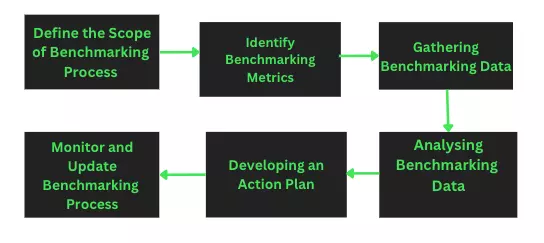
- Defining the scope of the benchmarking process: The first step in marketing benchmarking is to clearly define the scope of the process. This involves identifying the marketing areas that need to be benchmarked, such as advertising, branding, pricing, product development, and customer service.
- Identifying benchmarking metrics: Once the scope has been defined, the next step is to identify the metrics that will be used to benchmark the company’s marketing performance against its competitors. This could include metrics such as market share, customer satisfaction, brand awareness, customer retention rates, and conversion rates.
- Gathering benchmarking data: After identifying the metrics, the next step is to collect data on the company’s marketing and competitors’ performance. This could involve conducting surveys, analysing sales data, and researching industry reports and trends.
- Analysing benchmarking data: Once the data has been gathered, it is analysed to identify areas where the company’s marketing performance falls short of its competitors or industry standards. This analysis helps to identify best practices that can be used to improve the company’s marketing performance.
- Developing an action plan: Based on the analysis of the benchmarking data, the company develops an action plan to improve its marketing performance. This could involve implementing new marketing strategies, improving customer service, or enhancing product development processes.
- Monitoring and updating the benchmarking process: Finally, the company continues to monitor its marketing performance and update the benchmarking process as needed. This helps ensure the company remains competitive and achieves its marketing goals.
The Future Aspect of Marketing Benchmarking
The future of marketing benchmarking is likely to be shaped by a number of factors. Here are some of the key trends and developments that may impact marketing benchmarking in the coming years:
- The growing importance of data: With the increasing availability of data, marketing benchmarking will likely become more data-driven. Companies must collect and analyse data from various sources to gain insights into their marketing performance and competitors.
- Emphasis on customer experience: As companies focus more on customer experience, marketing benchmarking must incorporate metrics that measure customer satisfaction and loyalty. This will help companies understand how to improve the customer experience and stay competitive in the marketplace.
- Use of new technologies: With the rapid pace of technological innovation, marketing benchmarking will likely incorporate new technologies such as artificial intelligence and machine learning. These technologies help companies automate data collection and analysis and identify patterns and trends that might not be immediately apparent.
- Integration with other business processes: Marketing benchmarking will become more closely integrated with other business processes such as strategic planning, product development, and customer service. This will help companies to develop a more holistic view of their business and make better decisions across all areas of their operations.
- Focus on sustainability: As sustainability becomes a more critical concern for consumers and businesses, marketing benchmarking will likely incorporate metrics that measure a company’s sustainability performance. This will help companies understand how to improve their sustainability practices and communicate their sustainability credentials to customers.
Types of Marketing Benchmarking
Companies can use several marketing benchmarking types to evaluate their marketing performance and compare themselves to their competitors. Here are some of the most common types:
- Internal benchmarking involves comparing a company’s marketing performance against its historical data. This can be useful for identifying trends and changes in performance over time and setting internal targets for improvement.
- Competitive benchmarking involves comparing a company’s marketing performance against its competitors. This can help companies understand how they stack up against their peers and identify areas where they may fall behind.
- Functional benchmarking involves comparing a company’s marketing performance against other companies in the same industry or sector. This can help companies identify best practices and strategies their peers use that they can adapt and implement in their marketing campaigns.
- Generic benchmarking involves comparing a company’s marketing performance against companies in other industries or sectors. This can help companies gain a broader perspective on marketing trends and best practices and identify innovative strategies they can apply to their marketing efforts.
- Global benchmarking involves comparing a company’s marketing performance against companies operating in different regions or countries. This can help companies to understand how their marketing strategies and tactics may need to be adapted for other markets and cultures.
Example
One example of a brand that has successfully used marketing benchmarking is Coca-Cola. The company has a long history of using benchmarking to stay competitive in the marketplace and improve its marketing performance.

One way that Coca-Cola uses benchmarking is by comparing its marketing campaigns to its competitors. For example, the company has used competitive benchmarking to evaluate its advertising and promotional efforts against PepsiCo, its main competitor in the soft drink industry. By analysing the strengths and weaknesses of PepsiCo’s marketing campaigns, Coca-Cola has identified areas where it can improve its marketing efforts, such as by focusing more on social media and digital marketing.
Coca-Cola also uses internal benchmarking to track its marketing performance over time. The company regularly collects data on its marketing campaigns, including metrics such as brand awareness, customer engagement, and sales. By comparing this data to historical benchmarks, Coca-Cola can identify trends and changes in its marketing performance and adjust as needed.
FAQ
What is marketing benchmarking?
Marketing benchmarking is comparing a company’s marketing performance to industry standards or competitors’ performance to identify areas for improvement and develop more effective marketing strategies.
Why is marketing benchmarking important?
Marketing benchmarking is essential because it helps companies to evaluate their marketing performance, identify areas for improvement, and stay competitive in the marketplace. By comparing themselves to industry standards or competitors, companies can gain valuable insights into their strengths and weaknesses and develop more effective marketing strategies.
What are the different types of marketing benchmarking?
There are several types of marketing benchmarking, including internal benchmarking, competitive benchmarking, functional benchmarking, generic benchmarking, and global benchmarking. Each type of benchmarking compares a company’s marketing performance to different standards or competitors.
What metrics are commonly used in marketing benchmarking?
Metrics commonly used in marketing benchmarking include brand awareness, customer engagement, lead generation, conversion rates, customer satisfaction, and sales. In addition, companies may also use qualitative metrics, such as customer feedback and brand perception, to evaluate their marketing performance.
How can companies use marketing benchmarking to improve their marketing strategies?
Companies can use marketing benchmarking to identify areas for improvement in their marketing strategies, such as by analysing the strengths and weaknesses of their competitors’ marketing campaigns, evaluating their own historical performance, and studying best practices and strategies used by successful brands in the industry. Then, by adjusting their marketing strategies based on these insights, companies can develop more effective campaigns and stay competitive in the marketplace.
Affiliate Network
Definition
An affiliate network is a group of companies that finds affiliates for the brands to promote their products or services.
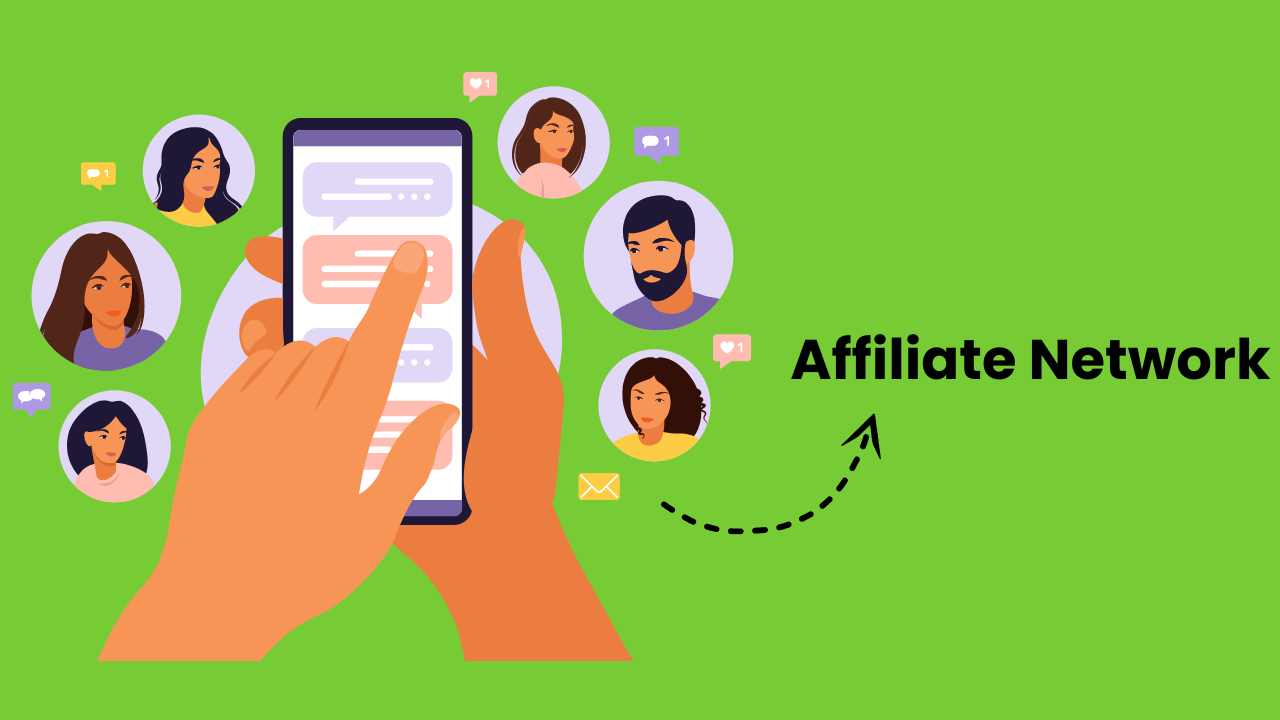
Description
Affiliate marketing generates 5% or 25% of online sales for different brands.
Brands can connect with affiliate marketers directly, or they can choose to subcontract their work. More than 80% of the brands have affiliate programs.
The affiliate network provides an extensive database to the affiliates from which they can choose the products they wish to promote.
This affiliate network is beneficial for affiliate marketers because they do not have to collaborate with different merchants to promote multiple products. In a nutshell, it make the life of merchants and marketers easy. It prevents marketers from interacting with different merchants.
Example:
Amazon runs an affiliate marketing program. It is a big retail outlet with a wide range of products, making it more like an affiliate marketing program. The affiliates have to review the application process to become Amazon associates. According to the affiliate program, the fellow has to make at least 3 sales during the first 180 days. According to this program, the merchant wants that wherever you promote the content, it has to be original. Amazon has no restrictions in promoting the content; it can be done on any social media platform or blog. The affiliates can promote virtually anything which is in stock.
FAQs
How does an affiliate network work?
It is prepared to allow affiliates to sell more products and services. For each sale, the affiliate earns a commission. The affiliate drives sales for the products they choose to promote. It allows individuals to leverage the network for sales and contribute to higher sales. Later the merchant provides each contributor with their share of the profit.
Which are the three main entities involved with an affiliate network?
In the affiliate network, there are three main entities or parties that are involved, which include:
- The advertiser
- The customer
- The product creator
What are some of the qualities of a good affiliate network program?
These are some of the qualities of a good affiliate network program:
- A good affiliate marketing program must be easy to use. It gives easy access to earn money online.
- An affiliate program must be relevant and of the time. It should have more people in its network so that more networks will attract more buyers. More sales opportunities make the affiliate program successful.
- Affiliate network programs should have products that are commonly available in the market and not those that are rare. This enables the affiliates to promote as many products as they want, ultimately increasing sales.
Also Read – Affiliate Marketing For Beginners: What It Is + How to Succeed
Lookalike Audience
Definition
A lookalike audience is a group of people who share similar characteristics or behaviours with a company’s existing customers or target audience.
Description
These are created using data analysis techniques that identify commonalities and patterns among a company’s customer base or target audience and then use that information to identify and target new customers likely to be interested in the company’s products or services.

These are often used in digital advertising. They can be used to target ads to potential customers who share characteristics with existing customers and are, therefore, more likely to convert.
Importance of Lookalike Audience
- Allows businesses to reach new potential customers who are likely to be interested in their products or services
- Increases the efficiency and effectiveness of advertising campaigns by targeting people who are more likely to convert
- Helps businesses expand their customer base and reach new audiences
- Provides insights into customer characteristics and behaviours that can inform marketing strategy and drive sales
- Helps businesses create more targeted and effective marketing campaigns that resonate with their target audience
- Can improve return on investment (ROI) by reducing ad spend on audiences that are less likely to convert
- Enables businesses to find and reach new customers who are similar to their existing customer base, which can lead to increased customer loyalty and repeat business.
How to create a lookalike audience?
Here are the general steps to create this audience:
- Define your source audience: First, you need to identify the people who will serve as your source audience. This can be your existing customers, email subscribers, website visitors, or social media followers.
- Collect data on your source audience: You’ll need to collect data on your audience, such as demographic information, interests, and behaviours. This data can be collected from your website, social media accounts, customer relationship management (CRM) system, or other sources.
- Upload your source audience data: Once you have the data on your source audience, you’ll need to upload it to the advertising platform you’re using. This could be Facebook Ads Manager, Google Ads, or another medium.
- Choose your target location and audience size: Next, you’ll need to select the location you want to target and the size of your audience. The size of your audience will depend on the size of your source audience and the level of similarity you want to achieve.
- Set your audience similarity level: You can set the level of similarity between your source audience and your audience. A higher level of similarity will result in a smaller audience but a more accurate match.
- Create your lookalike audience: Finally, you can create your lookalike audience and begin targeting your ads to this audience. You can use the lookalike audience to target ads on various platforms, including social media, search engines, and display networks.
How to use a Lookalike Audience?
Here are some general ways that businesses can use this audience targeting to reach potential customers:
- Ad targeting: Businesses can use it to target their ads to people who share similar characteristics with their existing customers. This can improve the efficiency and effectiveness of their advertising campaigns and increase the likelihood of conversions.
- Content personalization: This type of targeting can also be used to personalise the content that businesses show to potential customers. For example, an e-commerce business could show personalised product recommendations to people who are part of their lookalike audience.
- Email marketing: It can also improve email marketing campaigns. By targeting emails to people similar to their existing customers, businesses can increase the likelihood of engagement and conversions.
- Social media campaigns: Social media platforms like Facebook and LinkedIn offer lookalike audience targeting as an advertising option. By creating a lookalike audience, businesses can target their ads to people similar to their existing customers on these platforms.
- Market research: This targeting can also be used for market research. By identifying commonalities among their existing customers and creating a lookalike audience, businesses can gain insights into the characteristics and behaviours of their target audience.
Example

Netflix, the streaming giant uses lookalike audience targeting to reach potential subscribers similar to their existing customers and likely to be interested in their original programming.
FAQ
What is the difference between a lookalike audience and a custom audience?
A lookalike audience is created based on the characteristics of an existing audience. In contrast, a custom audience is made up of people who have already engaged with a brand, such as through its website or social media pages.
How is a lookalike audience created?
It is built using data analysis techniques to identify commonalities among an existing audience, such as demographics and interests. This information is then used to create a new audience with similar characteristics.
What are the benefits of using lookalike audience targeting?
This type of targeting can help businesses reach new potential customers likely to be interested in their products or services and share similar characteristics with their existing customers. This can increase the efficiency and effectiveness of their advertising campaigns.
What platforms offer lookalike audience targeting?
Many advertising platforms, such as Facebook Ads Manager and LinkedIn Ads, offer this targeting as an advertising option.
How can businesses use lookalike audience targeting?
Companies can use lookalike audience targeting to improve the efficiency and effectiveness of their advertising campaigns, personalise their content, and gain insights into their target audience.
How can a business measure the effectiveness of its lookalike audience targeting?
Businesses can measure the effectiveness by tracking key performance indicators, such as click-through rates, conversion rates, and return on ad spend. They can also use A/B testing to compare the performance of their targeting against other advertising strategies.



